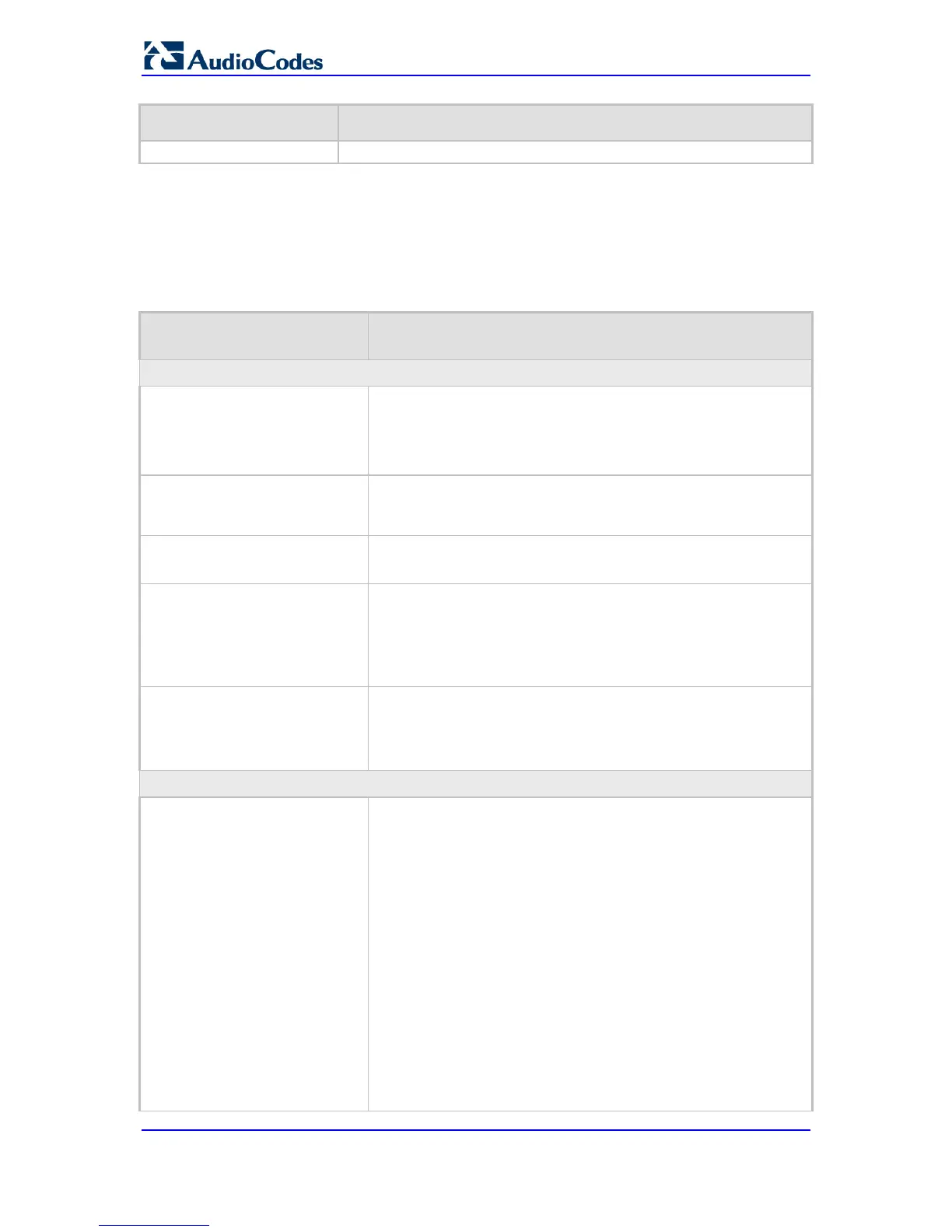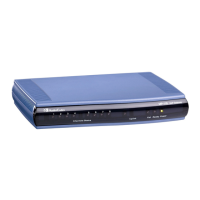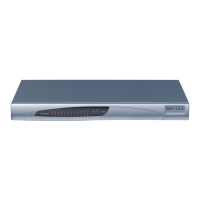43.5 RADIUS Parameters
The RADIUS parameters are described in the table below. For supported RADIUS
attributes, see 'RADIUS Accounting CDR Attributes' on page 371.
Table 43-27: RADIUS Parameters
Parameter Description
RADIUS Accounting Parameters
Web: Enable RADIUS Access
Control
[EnableRADIUS]
Enables the RADIUS application.
[0] Disable (Default)
[1] Enable
Note: For this parameter to take effect, a device reset is required.
Web: Accounting Server IP
Address
[RADIUSAccServerIP]
Defines the IP address of the RADIUS accounting server.
Web: Accounting Port
[RADIUSAccPort]
Defines the port of the RADIUS accounting server.
The default value is 1646.
Web/EMS: RADIUS Accounting
Type
[RADIUSAccountingType]
Determines when the RADIUS accounting messages are sent to
the RADIUS accounting server.
[0] At Call Release = (Default) Sent at call release only.
[1] At Connect & Release = Sent at call connect and release.
[2] At Setup & Release = Sent at call setup and release.
Web: AAA Indications
EMS: Indications
[AAAIndications]
Determines the Authentication, Authorization and Accounting
(AAA) indications.
[0] None = (Default) No indications.
[3] Accounting Only = Only accounting indications are used.
General RADIUS Parameters
Web: Use RADIUS for
Web/Telnet Login
EMS: Web Use Radius Login
[WebRADIUSLogin]
Enables RADIUS queries for Web and Telnet authentication.
[0] Disable (default).
[1] Enable = Logging into the device's Web and Telnet
embedded servers is done through a RADIUS server. The
device contacts a user-defined server and verifies the given
user name and password against a remote database, in a
secure manner.
Notes:
The parameter EnableRADIUS must be set to 1.
RADIUS authentication requires HTTP basic authentication,
meaning the user name and password are transmitted in clear
text over the network. Therefore, it's recommended to set the
parameter HTTPSOnly to 1 to force the use of HTTPS, since
the transport is encrypted.

